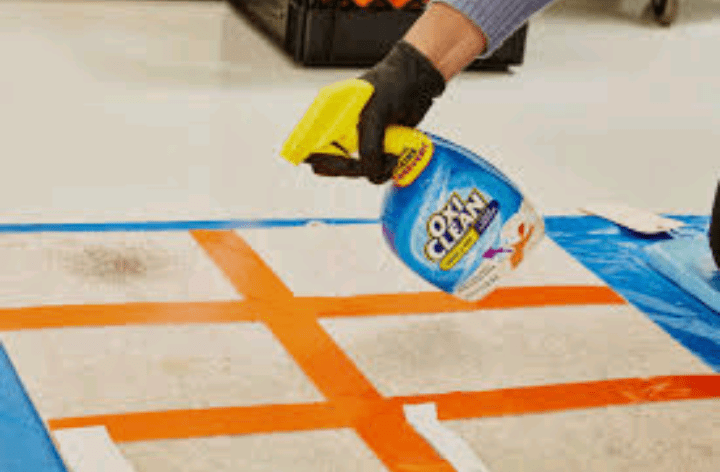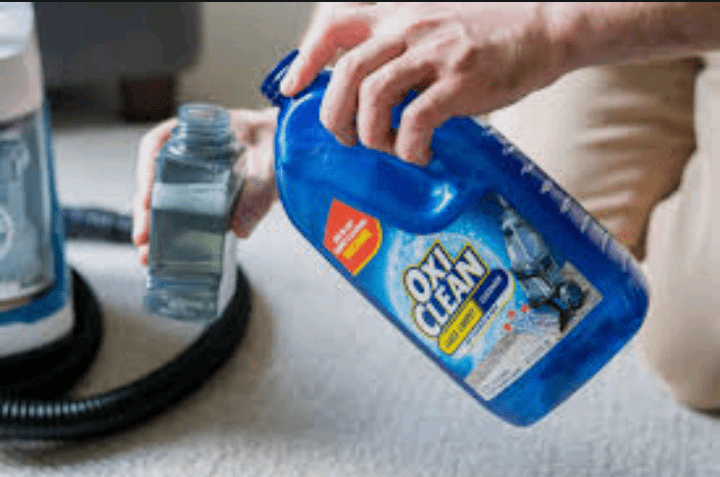Keeping our carpets clean and fresh is a task that often feels daunting, especially when faced with stubborn stains and mysterious odors. The good news is that there’s a simple and cost-effective solution right at our fingertips – DIY carpet cleaner solutions. In this article, we’ll explore the art of crafting your very own carpet cleaner using household ingredients and easy-to-follow techniques.
Carpets play a pivotal role in our homes, providing comfort and warmth underfoot. However, they also bear the brunt of daily activities, from accidental spills to muddy footprints. Professional carpet cleaning services can be pricey, but fear not, as DIY carpet cleaning is here to rescue both your carpets and your wallet.
No need for fancy equipment or complex chemical formulas – with a handful of common household items, you can create effective carpet cleaner solutions tailored to your specific needs. Whether you’re dealing with a red wine mishap, pet-related odors, or just the wear and tear of daily life, our journey into the world of DIY carpet cleaning promises to be your go-to guide for a cleaner, fresher home.
So, let’s roll up our sleeves and dive into the realm of homemade carpet care. From the magic of baking soda to the versatility of white vinegar, we’ll uncover the secrets of simple ingredients that can transform your carpet from lackluster to luxurious. Get ready to discover how a little DIY ingenuity can breathe new life into your carpets, making your home a more comfortable and inviting space for all.
Read also: DIY Pest Control: A Step-by-Step Guide
DIY Carpet Cleaner Solution

I. Understanding the Basics
Before we embark on our DIY carpet cleaning journey, it’s crucial to understand the basics of what makes an effective carpet cleaner. The primary goals are to lift stains, eliminate odors, and refresh the overall appearance of your carpet. A successful DIY carpet cleaner solution typically involves a combination of cleaning agents, stain lifters, and deodorizers.
II. Ingredients
Baking Soda: The unsung hero in many household cleaning solutions, baking soda is a versatile ingredient. It acts as a natural deodorizer, absorbing unpleasant odors from your carpet fibers.
Sprinkle baking soda liberally over your carpet, leave it for a few hours or overnight, and then vacuum thoroughly. This simple process can neutralize odors and freshen up your carpet.
White Vinegar: White vinegar is a potent cleaner with antibacterial properties. It helps to break down stains and eliminate bacteria lurking in your carpet.
Mix equal parts white vinegar and water in a spray bottle. Spray the solution on the stained area, let it sit for a few minutes, and blot with a clean cloth. This method works wonders on common stains like coffee or red wine.
Dish Soap: A mild dish soap can be an excellent addition to your DIY carpet cleaner. It helps to break down grease and lift stubborn stains.
Create a solution by mixing a few drops of dish soap with warm water. Apply the mixture to the stained area, gently scrub with a soft brush, and blot with a clean cloth.
Hydrogen Peroxide: Hydrogen peroxide is a powerful stain remover and disinfectant. It’s particularly effective for lifting tough stains like blood or pet urine.
Create a solution by mixing hydrogen peroxide with water (1:1 ratio). Apply the solution to the stain, let it sit for a few minutes, and blot with a clean cloth. Test the solution on a hidden area first to ensure colorfastness.
Essential Oils: While not essential for cleaning, adding a few drops of essential oils can enhance the fragrance of your DIY carpet cleaner.
Mix a few drops of lavender or tea tree essential oil with your preferred DIY carpet cleaner solution for a pleasant aroma.
III. DIY Carpet Cleaner Recipes
- All-Purpose Carpet Cleaner
- 1 cup white vinegar1 cup water1 tablespoon dish soap
- Odor-Eliminating Carpet Powder
- 1 cup baking soda10 drops essential oil (e.g., lavender or tea tree)
- Stain-Busting Carpet Spot Cleaner
- 1/4 cup hydrogen peroxide1 tablespoon dish soap1 tablespoon baking soda
Read also: DIY Face Masks: Unveiling the Art of Crafting Natural Skincare Solutions
IV. Techniques for Effective DIY Carpet Cleaning
Preparation and Vacuuming: Before applying any DIY solution, vacuum your carpet thoroughly to remove loose dirt and debris. This allows the cleaning solution to penetrate deeper into the carpet fibers.
Tip: Consider using a carpet rake or brush attachment on your vacuum cleaner to lift the carpet fibers and ensure a more thorough clean.
Spot Testing: Always perform a spot test in an inconspicuous area before applying any DIY carpet cleaner to the main carpeted areas. This helps ensure that the solution won’t cause discoloration or damage to your carpet.
Example: Apply a small amount of your chosen DIY carpet cleaner to a hidden corner, wait for a few minutes, and blot with a white cloth. If there’s no color transfer, it’s safe to proceed.
Blotting, Not Rubbing: When dealing with stains, resist the urge to rub the affected area vigorously. Instead, blot gently with a clean cloth or paper towel. Rubbing can spread the stain and damage the carpet fibers.
Tip: Use an old, clean towel or a stack of paper towels to absorb as much moisture as possible. Press down firmly to lift the stain without spreading it.
Proper Application of Solutions: Whether spraying a solution or applying a paste, make sure to distribute it evenly over the stained or soiled area. Allow the solution to sit for the recommended time to break down stains and odors effectively.
Tip: Use a soft-bristle brush or an old toothbrush to work the solution into the carpet fibers, especially in high-traffic areas.
Drying Time: Allow your carpet to dry completely before walking on it or replacing furniture. Adequate drying time prevents new stains from forming and ensures the effectiveness of your DIY carpet cleaner.
Example: If possible, open windows or use fans to expedite the drying process. Avoid placing heavy furniture on the carpet until it’s completely dry to prevent indentations.
V. Maintaining a Clean Carpet
DIY carpet cleaning is not just about dealing with stains; it’s also about maintaining a clean and healthy living space. Here are some additional tips to keep your carpets in top condition:
Regular Vacuuming: Make vacuuming a regular part of your cleaning routine. High-traffic areas may require more frequent vacuuming to prevent dirt from settling into the carpet fibers.
Vacuum at least once a week, and consider increasing the frequency in areas with heavy foot traffic.
Shoe-Free Zones: Designate certain areas of your home as shoe-free zones to minimize the amount of dirt and debris tracked onto your carpets.
Place a decorative mat or shoe rack near entrances to encourage guests to remove their shoes upon entering.
Professional Cleaning: While DIY solutions are excellent for regular maintenance, consider scheduling a professional carpet cleaning at least once a year to deep clean and revitalize your carpets.
Many professional cleaning services use steam cleaning or hot water extraction methods to remove deep-seated dirt and allergens.
Carpet Protectors: Consider applying a carpet protector spray after cleaning to create a barrier against future stains. This additional layer can repel liquids and make it easier to clean spills.
Read and follow the manufacturer’s instructions for the carpet protector spray to ensure proper application.
Read also: A Guide to Waste Management Case Studies
